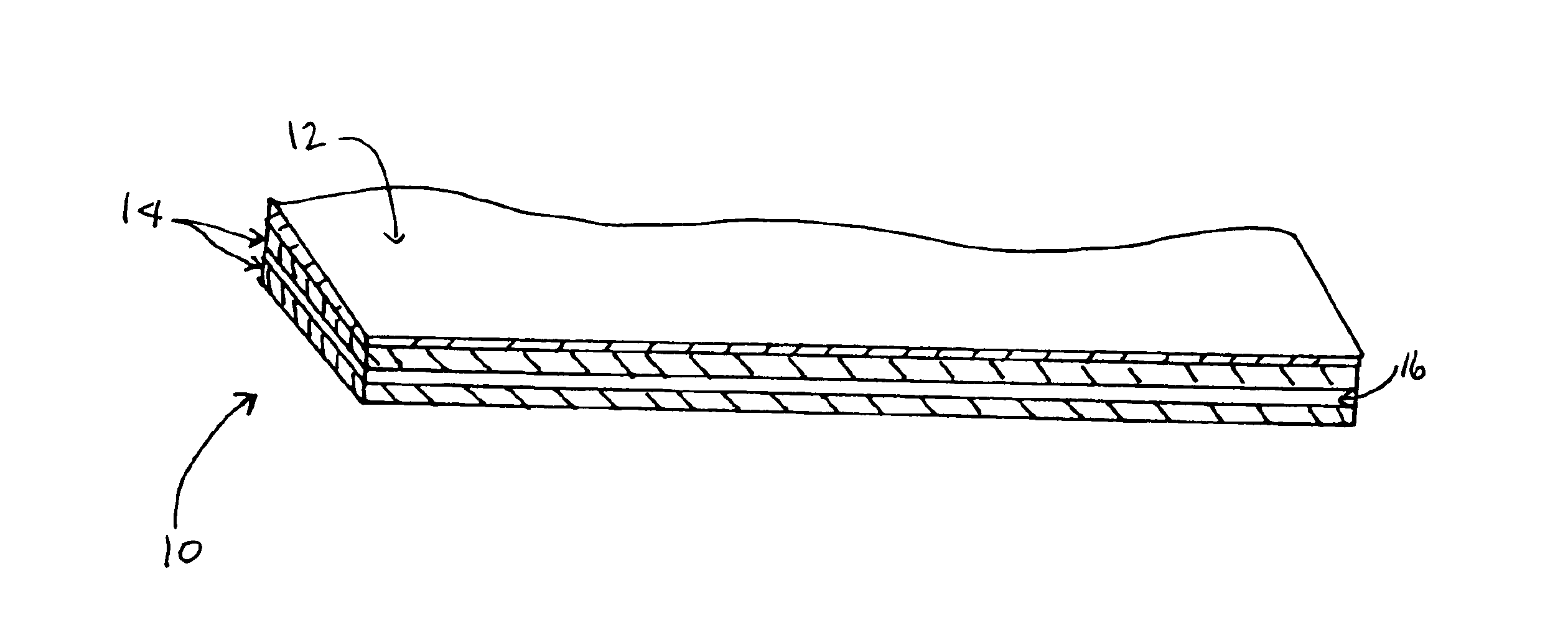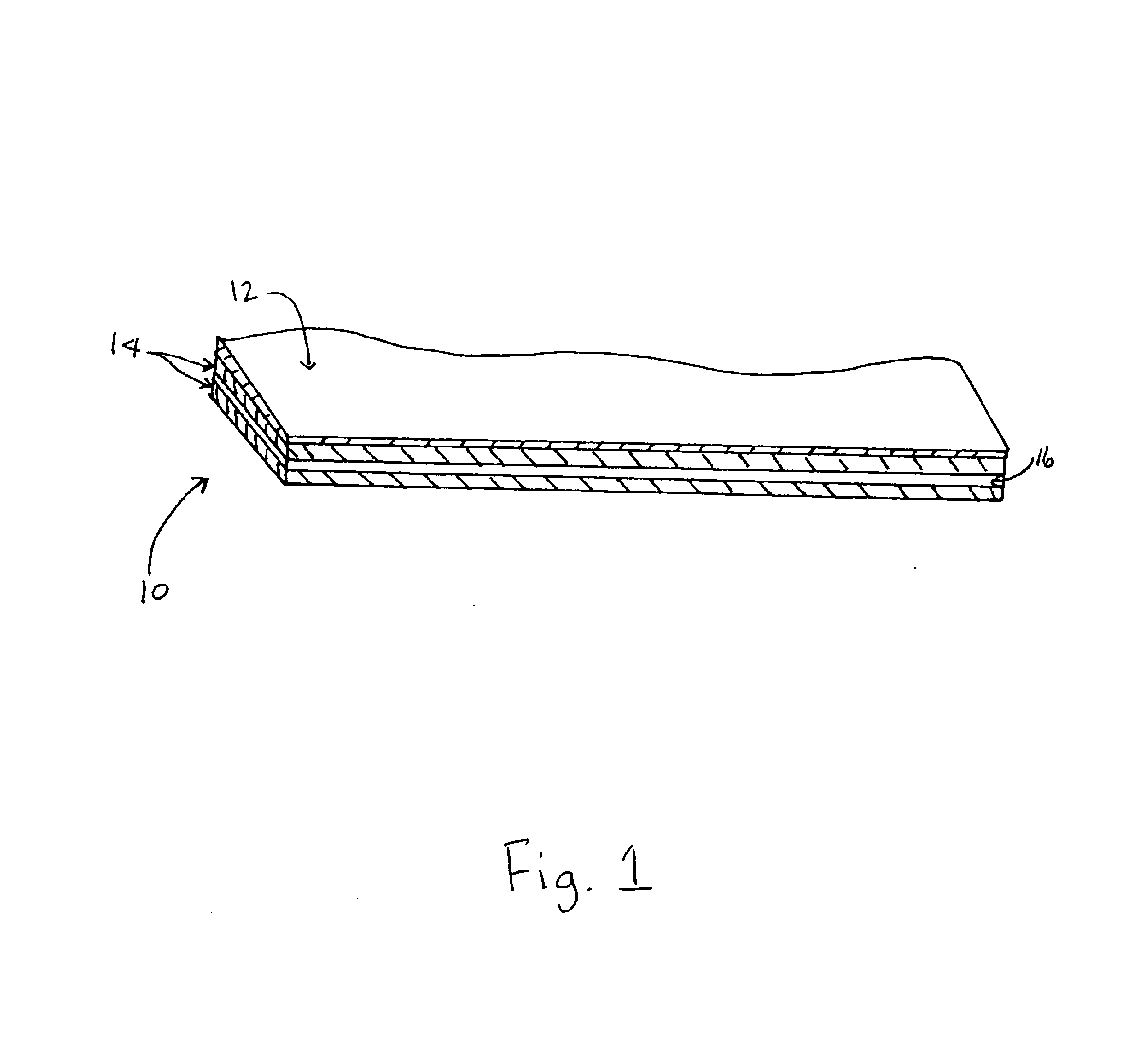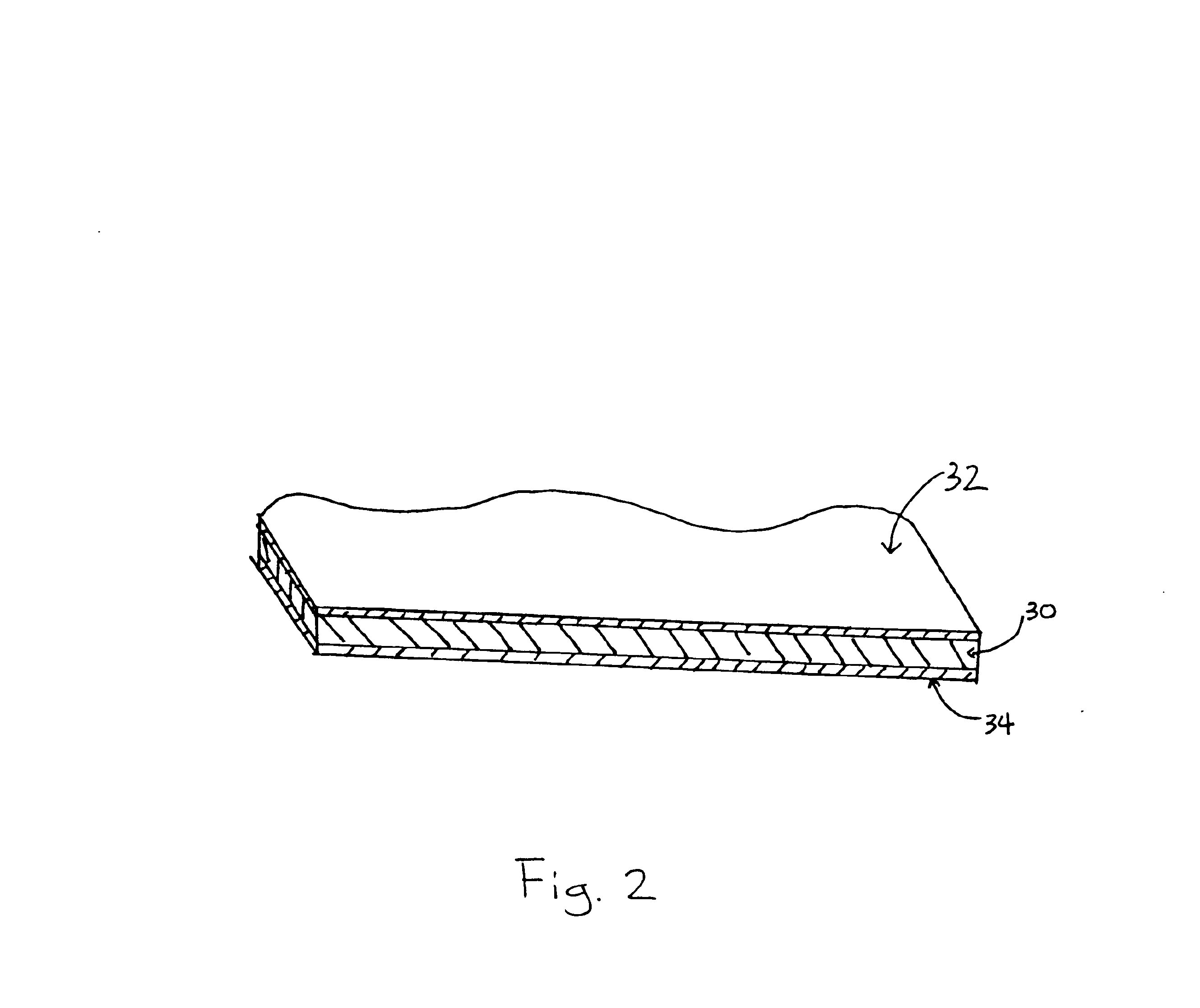Heat weldable roofing membrane
a roofing membrane and heat-weldable technology, applied in the field of multi-component membranes, can solve the problems of seam peeling, partially open seam, and lack of adhesion of epdm, especially cured epdm,
- Summary
- Abstract
- Description
- Claims
- Application Information
AI Technical Summary
Benefits of technology
Problems solved by technology
Method used
Image
Examples
second embodiment
In the present invention, as illustrated in FIG. 2, a roofing membrane 20 is shown in which a substrate layer of TPV 30 is positioned between top 32 and bottom 34 film layers of TPO. No scrim is necessary in this arrangement, although, of course, it may be included if desired.
The TPO layer used in the various embodiments of the present invention may be any commercialized TPO conventionally used in roofing membrane applications. TPOs are a class of uncrosslinked thermoplastic elastomers (TPEs) based predominantly or wholly on olefin polymers.
Thermoplastic elastomers (TPEs) are an important class of polymeric compositions that are particularly useful in producing durable components through conventional extrusion, calendaring or injection molding processes. Typically a TPE is a blend of thermoplastic polymer and an elastomer rubber. TPEs possess properties similar to a cured elastomer but TPEs have the advantage, compared to a rubber, that they undergo plastic flow above the melting po...
first embodiment
As noted, a scrim reinforcement layer 16 may be used, particularly in the present invention as illustrated in FIG. 1. Suitable scrim reinforcement layer 16 comprises a mesh of interwoven strands of thermoplastic or metal having a tensile strength sufficient to resist tearing when exposed to typical tensile loads experienced by roofing membranes from various directions. A preferred scrim reinforcement layer 16 is one comprised of polypropylene or polyethylene terephthalate (PET). In the embodiment of the invention illustrated in FIG. 2, comprising a TPV layer sandwiched between a top and bottom TPO layer, the TPV layer may be reinforced with short chopped polymeric or natural fibers, such as polyester, embedded in said TPV layer. Such fibers impart additional reinforcement to the membrane, and provide it with mechanical properties comparable to conventional scrim reinforced TPO membranes. Such fibers can be manufactured from recycled scrim, maintaining the total recyclable nature of ...
PUM
| Property | Measurement | Unit |
|---|---|---|
| thickness | aaaaa | aaaaa |
| total thickness | aaaaa | aaaaa |
| thickness | aaaaa | aaaaa |
Abstract
Description
Claims
Application Information
 Login to View More
Login to View More - R&D
- Intellectual Property
- Life Sciences
- Materials
- Tech Scout
- Unparalleled Data Quality
- Higher Quality Content
- 60% Fewer Hallucinations
Browse by: Latest US Patents, China's latest patents, Technical Efficacy Thesaurus, Application Domain, Technology Topic, Popular Technical Reports.
© 2025 PatSnap. All rights reserved.Legal|Privacy policy|Modern Slavery Act Transparency Statement|Sitemap|About US| Contact US: help@patsnap.com



